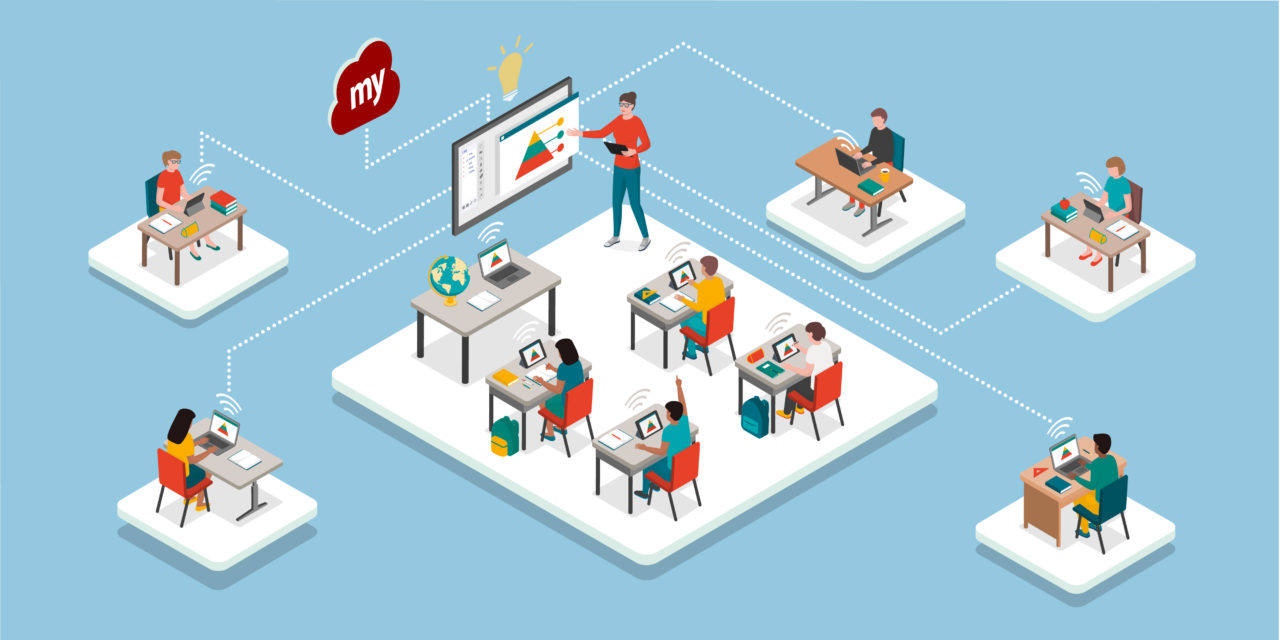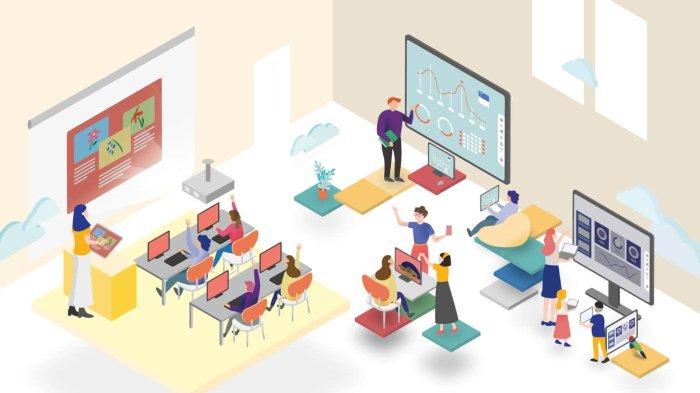In today’s digital age, blended learning has emerged as a powerful educational approach that combines traditional face-to-face instruction with online learning components. This hybrid model enhances student engagement, flexibility, and personalized learning, making it a preferred choice in schools, universities, and corporate training programs.
With the increasing availability of learning management systems (LMS), virtual classrooms, and digital tools, educators can create interactive, student-centered learning experiences that go beyond the limitations of traditional teaching. But how can schools and teachers effectively integrate both online and offline learning methods to ensure maximum success?
In this guide, we will explore:
- What is Blended learning combines the best aspects of online education with traditional classroom interactions, creating a flexible, and why is it important?
- Different models of blended learning.
- Best strategies for integrating online and traditional teaching.
- Challenges and solutions in blended learning.
- The future of hybrid education.
1️⃣ What Is Blended Learning?

Blended learning is an educational approach that combines in-person instruction with online learning activities. It allows students to engage with digital content, interact with teachers and peers, and take control of their learning pace while still benefiting from traditional classroom instruction.
📌 Key Characteristics of Blended Learning:
- Flexibility: Students learn both in the classroom and online.
- Personalization: Content can be tailored to individual learning needs.
- Increased Engagement: Combines interactive online tools with face-to-face discussions.
- Technology Integration: Uses LMS platforms, video lectures, and digital resources to enhance learning.
Why It Matters:
- 82% of K-12 teachers believe blended learning improves student outcomes.
- More than 70% of universities worldwide use blended learning in some capacity.
- Corporate training programs have shifted toward blended learning for employee development.
📌 Example: A university course might include in-person lectures, online video tutorials, discussion forums, and self-paced assignments.
2️⃣ Different Models of Blended Learning
Blended learning can take many forms, depending on the level of teacher-student interaction and technology use. Here are some of the most effective models:
1. Flipped Classroom Model 📖➡️💻
- Students watch video lectures and complete readings at home.
- Classroom time is used for discussions, projects, and problem-solving activities.
- Encourages active learning and student participation.
📌 Example: A math teacher records an algebra lesson for students to watch at home, then uses classroom time for group problem-solving and tutoring.
2. Rotation Model 🔄🎓
Students switch between different learning stations, including:
- Face-to-face instruction with a teacher.
- Online activities on computers or tablets.
- Collaborative group work or hands-on learning tasks.
📌 Example: In a science class, students rotate between watching a simulation on an iPad, conducting a lab experiment, and discussing results with a teacher.
3. Flex Model 🎯💻
- Students complete most of their learning online, but teachers are available for support.
- Works well for self-paced learning and independent study.
- Best for high school, college, and corporate training programs.
📌 Example: A university offers an online history course where students watch recorded lectures, participate in discussion forums, and attend optional in-person review sessions.
4. Enriched Virtual Model 🌍🎥
- Most learning happens online, but students meet with teachers occasionally for deeper discussions or assessments.
- Ideal for adult learners, working students, and corporate training.
📌 Example: A company provides an online leadership course, but employees meet for in-person workshops once a month.
3️⃣ Strategies for Integrating Online & Traditional Teaching
To make blended learning successful, educators must balance technology with human interaction and ensure students stay engaged and motivated. Here are some effective strategies:
✅ 1. Use a Learning Management System (LMS)
- Platforms like Google Classroom, Moodle, Blackboard, and Canvas help organize assignments, discussions, and online content.
- Enables teachers to track student progress and provide instant feedback.
📌 Tip: Choose an LMS that integrates video lessons, quizzes, and discussion boards for a seamless learning experience.
✅ 2. Implement Interactive & Engaging Online Content
- Use video lectures, animations, podcasts, and gamified learning to keep students interested.
- Tools like Kahoot!, Edpuzzle, and Nearpod make online lessons more interactive.
📌 Example: Instead of reading about World War II, students watch a documentary clip, complete an interactive quiz, and discuss key events online.
✅ 3. Combine Synchronous & Asynchronous Learning
- Synchronous (Live) – Real-time Zoom classes, virtual discussions, teacher Q&A sessions.
- Asynchronous (Self-Paced) – Recorded lectures, discussion boards, digital assignments.
📌 Tip: Offer a mix of both to accommodate different learning styles and schedules.
✅ 4. Foster Collaboration Through Online Tools
- Use tools like Google Docs, Padlet, and Trello for group projects and peer collaboration.
- Encourage students to work together on shared assignments and discussions.
📌 Example: Students collaborate on a research paper using Google Docs, providing real-time feedback and comments.
✅ 5. Assess Learning with Online Quizzes & Feedback Tools
- Use formative assessments (low-stakes quizzes, polls, discussion forums) to track progress.
- Provide instant feedback through Google Forms, Quizizz, or Socrative.
📌 Tip: Offer self-paced quizzes so students can check their knowledge before moving forward.
4️⃣ Challenges in Blended Learning & How to Overcome Them
1. Digital Divide & Access to Technology
Not all students have access to high-speed internet or devices.
Solution: Schools can provide tablets/laptops, set up community Wi-Fi hotspots, or use offline-accessible resources.
2. Student Engagement & Motivation
Online learning can lead to distractions, procrastination, or lack of focus.
Solution: Use interactive content, discussion forums, gamification, and real-world applications.
📌 Example: Reward students with badges, leaderboards, and certificates for completing online modules.
3. Training Teachers for Blended Learning
Not all educators are familiar with technology-enhanced teaching methods.
Solution: Provide professional development workshops on LMS usage, digital tools, and online engagement strategies.
📌 Example: Teachers take an online course on blended learning strategies before implementing them in class.
5️⃣ The Future of Blended Learning
With advancements in technology and education, blended learning will continue to evolve.
- AI-Powered Learning – Personalized recommendations based on student progress.
- Virtual & Augmented Reality (VR/AR) – Interactive, immersive learning experiences.
- Microlearning – Short, bite-sized lessons for flexible learning.
- Hybrid College & Workplace Training – More institutions adopting online + in-person models.
📌 Example: Future classrooms may have AI tutors that personalize content based on each student’s learning speed and preferences.
Conclusion: The Future of Education is Hybrid
Blended learning combines the best aspects of online education with traditional classroom interactions, creating a flexible, engaging, and effective learning experience. By using innovative teaching strategies, digital tools, and adaptive learning methods, educators can empower students to take charge of their learning in a connected world.
💬 What are your thoughts on blended learning? Have you experienced it? Share your insights below! 🎓💡✨

